Unless you’ve been living under a rock, most likely you’ve heard at least a little bit of the recent news about Ukraine. Over the past year there have been protests, government-hired snipers to kill said protesters, a corrupt president that fled after the fallout of that decision, and land grabs by Russia. Although some volatile areas remain in the east of the country, some alarmists would have you believe that tanks are rolling down the streets of Kyiv ((The more familiar Kiev is transliterated from the Russian Киев. Київ, written as Kyiv in English, is properly derived from the Ukrainian language.)) today, or that neo-Nazis have taken over the government, both of which are pure fiction. Admittedly, Kyiv is extremely dangerous, but only because it is so darn beautiful you may just fall in love and never want to come home. The architecture that one finds in the city is undeniably gorgeous. And one need not be a religious person to be in awe of the many magnificent churches and cathedrals in all parts of the city.
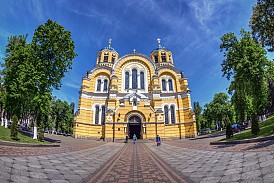 Â
 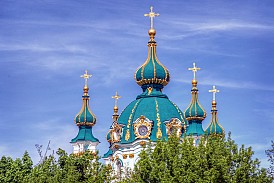 Â
 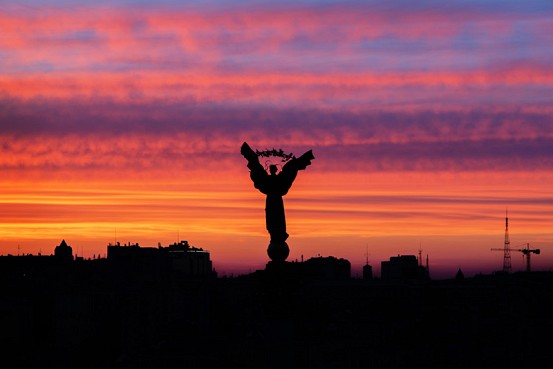 Â
 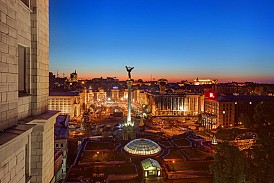 Â
 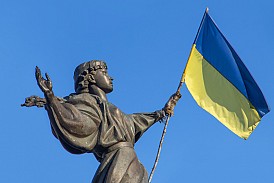
Scenes from Kyiv – Saint Volodymyr’s Cathedral, Saint Andrew’s Church, and views from the Maidan Nezalezhnosti (Independence Square).
I figured it might be enjoyable to take a little tour of Kyiv, and some of the beautiful sights within. For railfans there are plenty of interesting places to check out, including the city’s Metro system, and an interesting main train station.
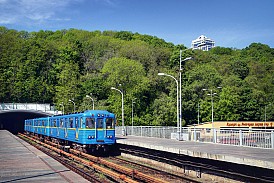 Â
 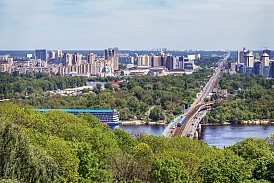 Â
 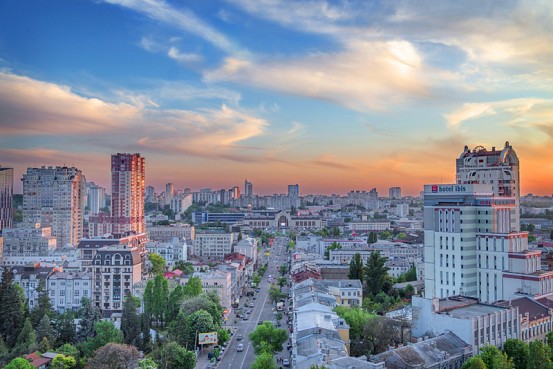 Â
 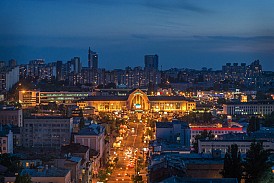 Â
 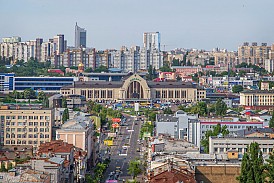
The Kyiv Metro, and Sunset, night, and morning views of Kyiv’s main train station.
As we meander around the beautiful spots in Kyiv, it is worth stopping at the city’s funicular. For those that spend their hours chasing interesting railroads across the world, a simple funicular isn’t really the most interesting of subjects. The Kyiv funicular does has a little bit of interesting history to go along with it, however. Kyiv is a very hilly city, which is one of the reasons why its Metro is so deep. But long before the Metro was ever conceived, the transportation solution was solved by this funicular, where instead of making an arduous uphill climb, passengers could just ride up to the top.
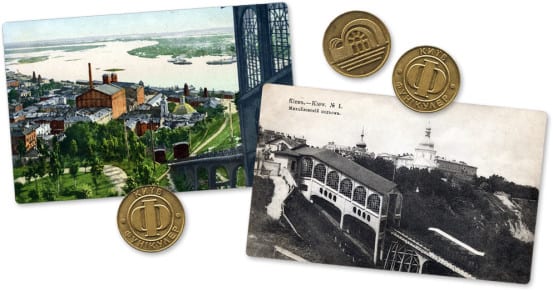
Postcards and tokens of the Kyiv Funicular. Neither the Metro nor the Funicular use coin tokens today, tokens are made of plastic. Postcards from Old Kiev.

A grandiose plan by the Soviets to replace St. Michael's cathedral and the funicular. Other proposals included the destruction of other nearby monuments like the St. Sophia Cathedral and the monument to Bohdan Khmelnytsky. Pictured design by Soviet architect Ivan Fomin, image via the KyivPost.
Constructed between 1902 and 1905, the funicular was opened to the public on May 7th, 1905. Because the upper station was located right behind St. Michael’s Cathedral, it was referred to as St. Michael’s Mechanical Lift. That cathedral has a long history – having been commissioned in 1108 – but was demolished by the Soviets in the 1930s. The idea was to demolish the church and instead use the land for grandiose government buildings. However, at the time of destruction, no concrete plans had been agreed upon. Most concepts for filling the space revolved around the idea of massive statues of Lenin, Stalin, or both. One called for a grand staircase extending down the hill to the banks of the Dneiper River – a plan that would have likely required the destruction of the funicular as well.
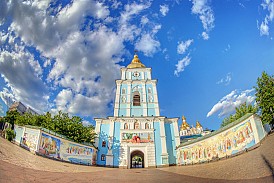 Â
 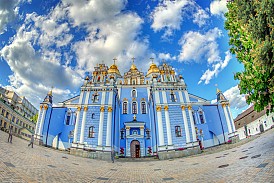 Â
 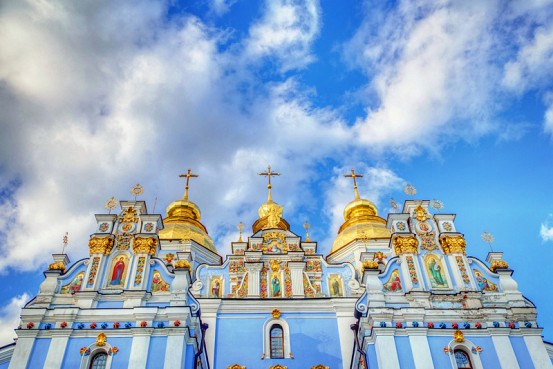 Â
 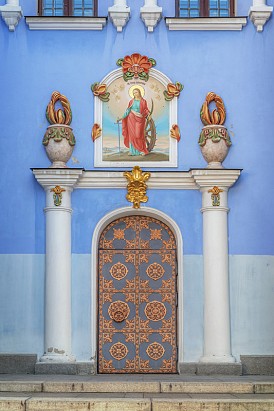 Â
 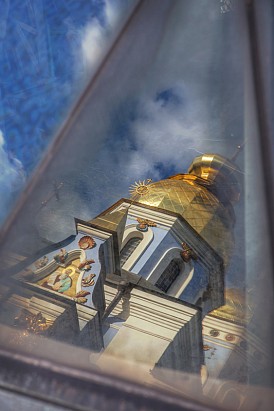 Â
 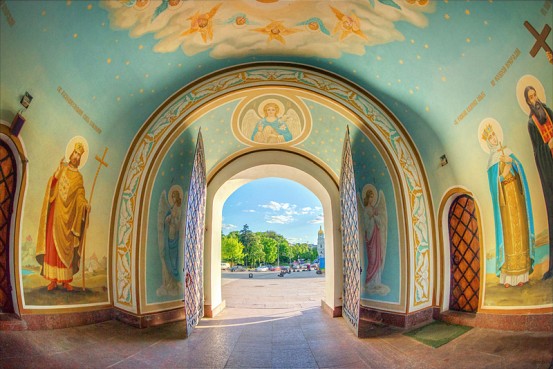 Â
 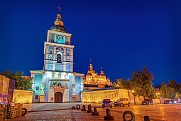 Â
 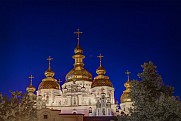 Â
 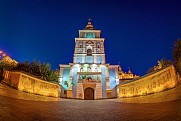
Photos of St Michael’s Golden Domed Monastery, a modern replica of the historical cathedral that was on this site, which was destroyed by the Soviets.
Due to the onset of World War II, the plans for the government building on the site of the former cathedral never came to fruition. After Ukrainian independence in 1991, a replica of the original cathedral was rebuilt on the site, completed in 1998. Meanwhile, the funicular was never demolished and still operates to this day. In 1958 it received mechanical upgrades, and in 1984 the stations were updated. Both the upper and lower stations have attractive stained glass paneling.
Today the Kyiv funicular serves around 13,200 passengers a day, including many tourists. The ride takes around 3 minutes, and the fare is 1.50 hryvnia, or around 13 cents (US). It isn’t hard to find the funicular, just look for the signs that say “фунікулер” which is simply the word “funicular” transliterated into Cyrillic. Each of the two funicular cars are split into several sections and allow passengers to sit or stand, with a capacity of around a hundred people. For the truly adventurous, visit Kyiv in the winter, where the city’s snow-covered streets are perfect for skiing and snowboarding – and the funicular functions as a perfect ski lift.
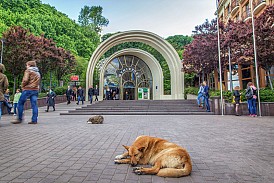 Â
 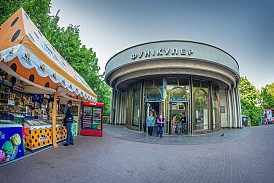 Â
 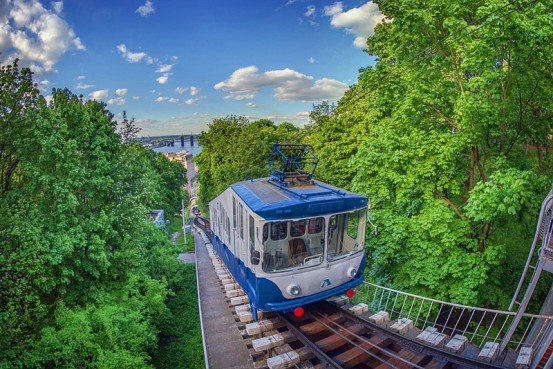 Â
 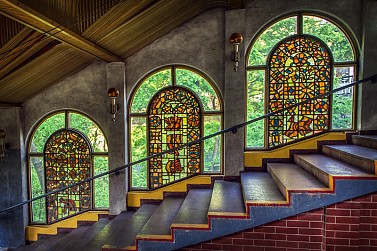 Â
 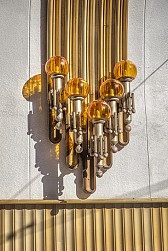 Â
 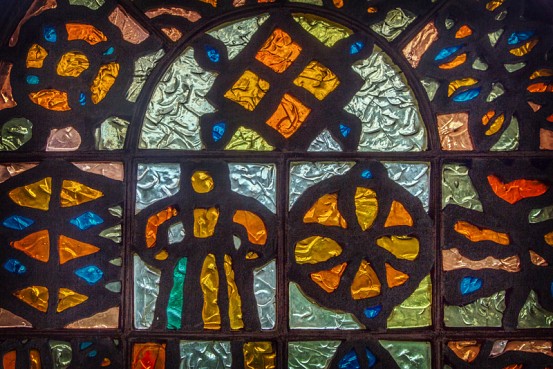 Â
 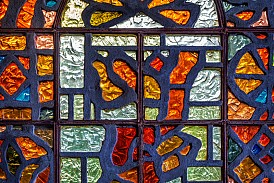 Â
 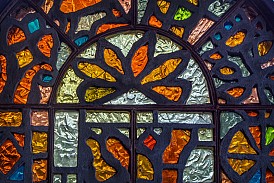 Â
 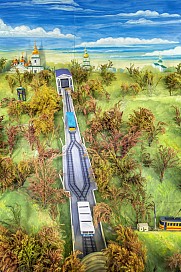 Â
 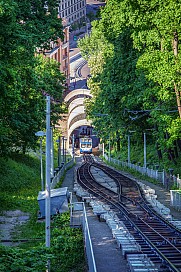 Â
 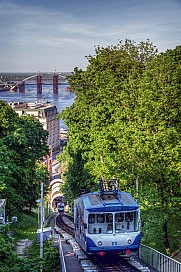 Â
 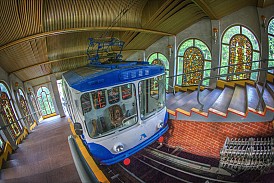 Â
 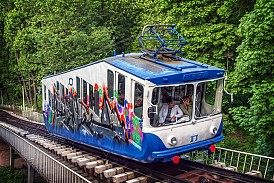 Â
 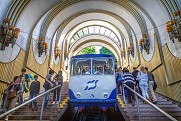 Â
 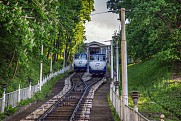 Â
 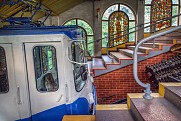 Â
 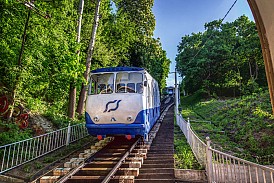 Â
 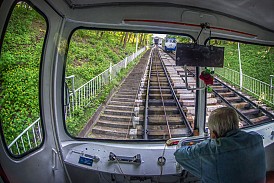 Â
 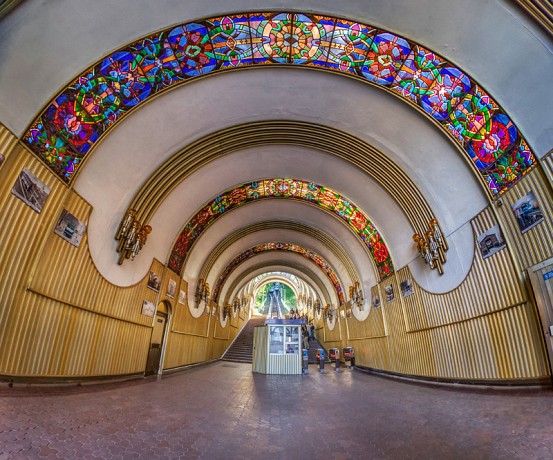
As a final send-off to complete our visit to Kyiv, enjoy the following sunset time lapse I recorded from my hotel room overlooking the Maidan Nezalezhnosti, or Independence Square.
For the folks subscribed to the site via email, you must visit the site to view video features.


Beautiful pictures! The city seems to have a distinctive color palette.
Kiev Central Rail station’s outside is ripoff New York Central’s Buffalo Central Terminal, and the inside is a ripoff of GCT. Someone in the USSR was a New York Central fan. Too many design similarities half way around the globe.